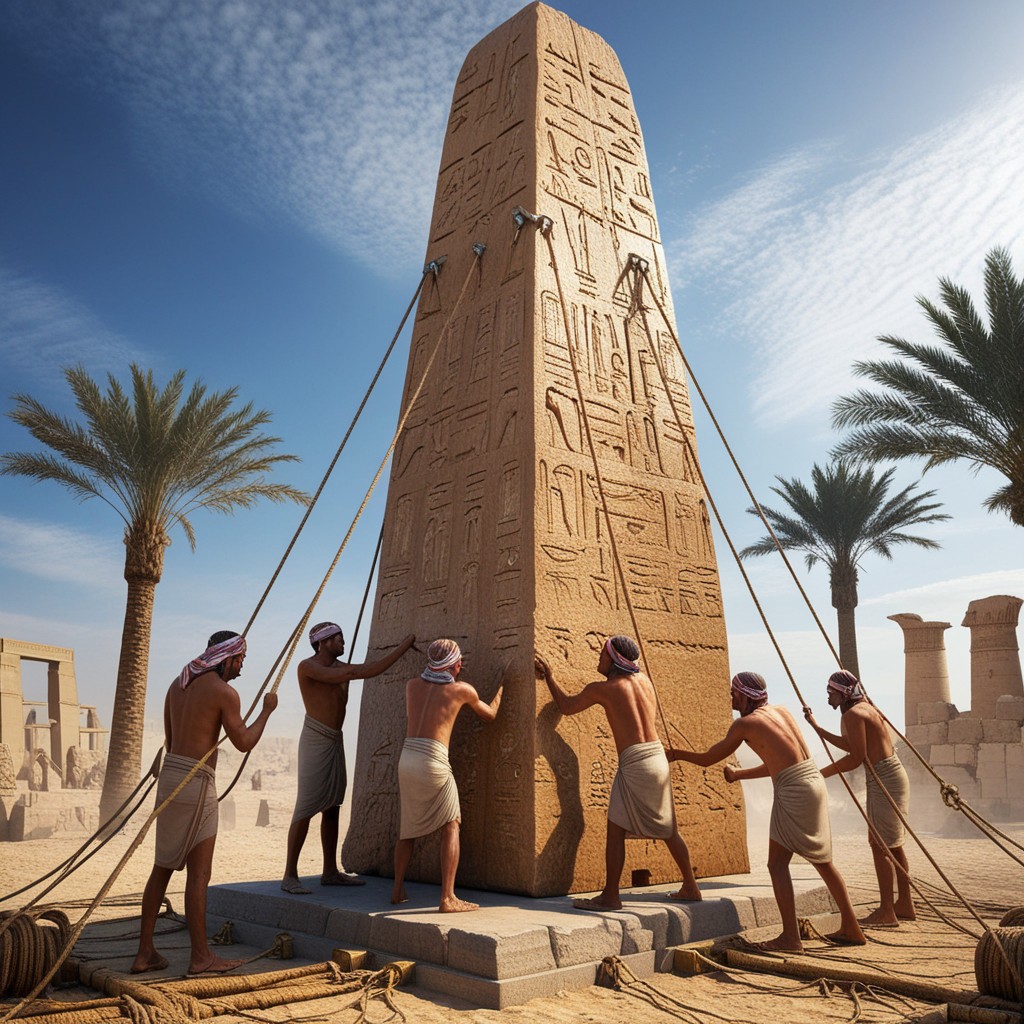
Ancient Egypt never ceases to amaze us with its awe-inspiring achievements. Among these engineering feats, the construction and erection of colossal stone obelisks remain a testament to the ingenuity, strength, and determination of this great civilization.

Obelisks, carved from a single piece of granite, were not only monumental structures but also spiritual symbols. Standing tall and pointing to the sky, they represented a connection between Earth and the heavens, often dedicated to the sun god, Ra. These towering giants, weighing hundreds of tons, were meticulously transported and erected with limited technology—a feat that baffles modern engineers.
The process of raising an obelisk was as remarkable as carving it. Workers used ropes, pulleys, and counterweights, relying entirely on physics, teamwork, and extraordinary precision. The dust, sweat, and careful coordination of these laborers brought these towering monuments to life. Even thousands of years later, these obelisks stand as symbols of resilience, faith, and human ingenuity.
Imagine the pride and determination of those workers as they watched the obelisk slowly rise to its final position—an awe-inspiring moment that connected their work to eternity.
🔍 Did You Know? Some of Egypt’s most famous obelisks have traveled far from their homeland and now stand in cities like Rome, Paris, London, and New York, carrying Egypt’s legacy worldwide.
What do you find most fascinating about ancient Egyptian engineering? Share your thoughts in the comments!